Have you ever wondered how our ancient ancestors protected their feet from the harsh, unforgiving terrains they traversed? Before the advent of modern footwear, humans relied on ingenuity and the resources nature provided to create primitive footwear that was not only functional but also deeply connected to their environment. Today, we’re going to delve into the fascinating world of survival shoe making, exploring the art of crafting footwear from natural materials, from the classic moccasin construction to the intriguing bark shoes.
Agreeably, the thought of making shoes from natural materials might seem daunting in our age of convenience and mass production. But consider this: according to a study by the United Nations, around 1.6 billion people worldwide live in rural areas and depend on natural resources for their livelihood. For them, and for anyone interested in self-sufficiency or sustainable living, knowing how to make footwear from natural materials is not just a fascinating skill, but a practical one.
Promise you this: by the end of this article, you’ll not only understand the techniques behind primitive footwear but also gain the confidence to attempt making your own pair. We’ll explore the various natural materials that can be used, from animal hides to plant fibers, and guide you through the process of transforming these raw materials into functional footwear. We’ll also discuss the benefits of using natural materials, from their sustainability to their unique connection to the natural world.
Now, let’s embark on this journey back in time, to when shoes were not just a fashion statement, but a testament to human ingenuity and adaptability. Let’s explore the art of survival shoe making, one stitch at a time.
From Bark to Moccasin: A Journey into Primitive Footwear
Imagine, if you will, a journey back in time, to an era when the world was a vast, untamed wilderness. In this primordial landscape, our ancestors, the first humans, walked barefoot, their soles toughened by the earth’s unyielding surface. Over time, they discovered the simple yet ingenious art of crafting footwear from the materials nature provided. This is the story of ‘From Bark to Moccasin: A Journey into Primitive Footwear’. It begins with the humble tree bark, stripped and softened, wrapped around the foot and secured with plant fibers. Then, we venture into the realm of animal hides, where every part of the creature is respected and utilized. The hides are tanned, a process as old as humanity itself, and cut into intricate patterns to form the first moccasins. These were not just footwear, but extensions of the wearer, adorned with beads, quills, and other embellishments that told a story of tribe, clan, and personal identity. This journey is not just about the evolution of footwear, but also about the evolution of human ingenuity, creativity, and connection to the natural world. It’s a testament to our past, a reflection of our present, and a glimpse into the possibilities of our future. So, let’s embark on this fascinating voyage, from the first tentative steps of our ancestors to the sophisticated footwear of today, one stride at a time.
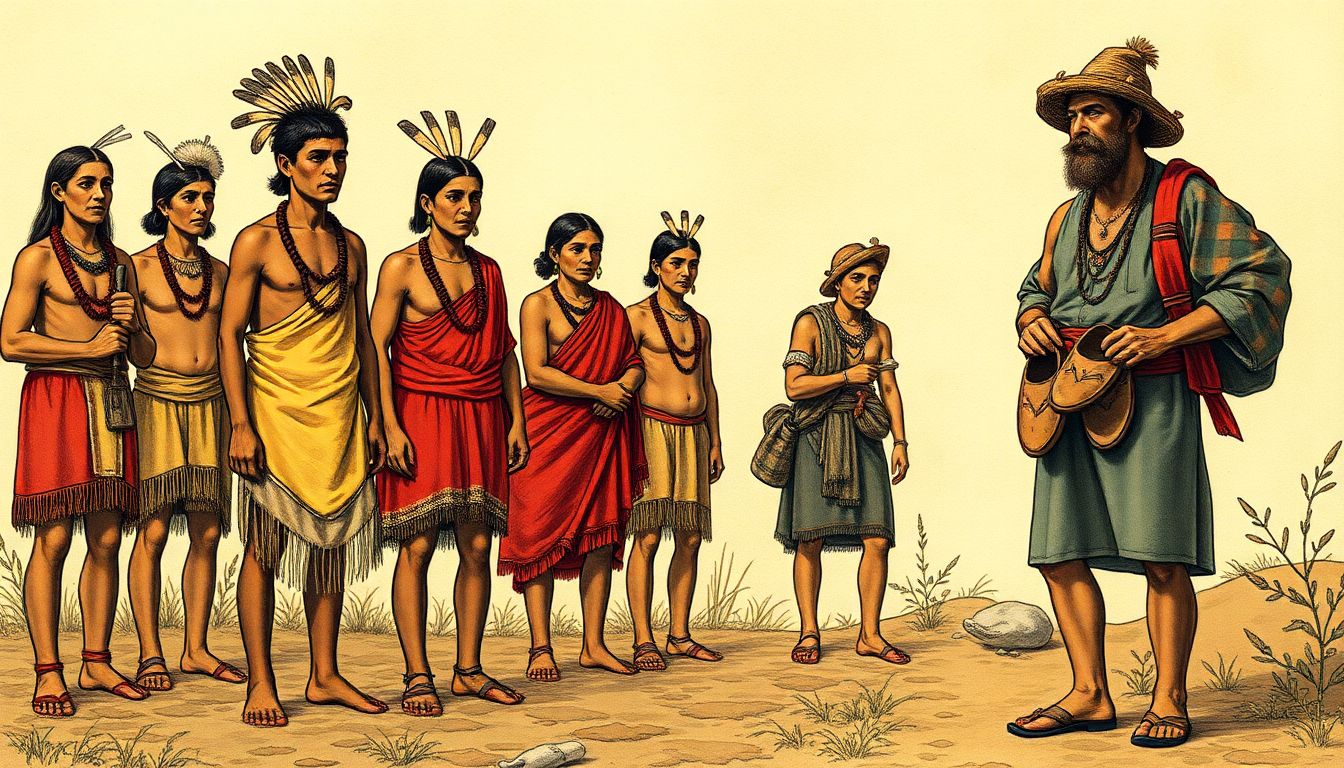
Understanding the Need for Primitive Footwear
In the vast expanse of human history, the humble footwear has played an indispensable role, especially in survival situations. Before the advent of modern footwear, primitive footwear served as a vital tool for our ancestors, providing protection, warmth, and traction in harsh environments. Let’s delve into the importance of primitive footwear, its advantages over modern counterparts, and the historical context of its use.
The primary function of primitive footwear was to protect the feet from the elements and potential hazards. In a survival context, this is paramount. Modern footwear, while comfortable and stylish, often lacks the durability and adaptability of primitive footwear. For instance, moccasins, a traditional Native American footwear, were made from animal hides, providing excellent insulation and protection against thorns and sharp rocks. They were also lightweight and flexible, allowing for better grip and maneuverability, crucial for traversing uneven terrains.
Another advantage of primitive footwear is its ability to be made from locally available materials. In a survival situation, this is a significant advantage. You don’t need a factory or specialized tools to create primitive footwear. All you need are materials like animal hides, plant fibers, or even bark, which can be found in most environments. This self-sufficiency is a key aspect of primitive footwear that modern footwear lacks.
Historically, primitive footwear has been used by various cultures around the world. The earliest evidence of footwear dates back to around 40,000 years ago, with the discovery of a pair of leather shoes in a cave in Armenia. Throughout history, primitive footwear has evolved to suit different environments and cultures. For example, the Inuit used sealskin boots to protect against the extreme cold of the Arctic, while the Maasai of Africa used beaded sandals to protect their feet from the hot, dry savannah.
In conclusion, while modern footwear has its advantages in terms of comfort and style, there is much to be learned from primitive footwear. Its durability, adaptability, and ability to be made from locally available materials make it a valuable tool in survival situations. Understanding the need for primitive footwear can provide us with a deeper appreciation for our ancestors’ ingenuity and a practical skill set for our own survival.
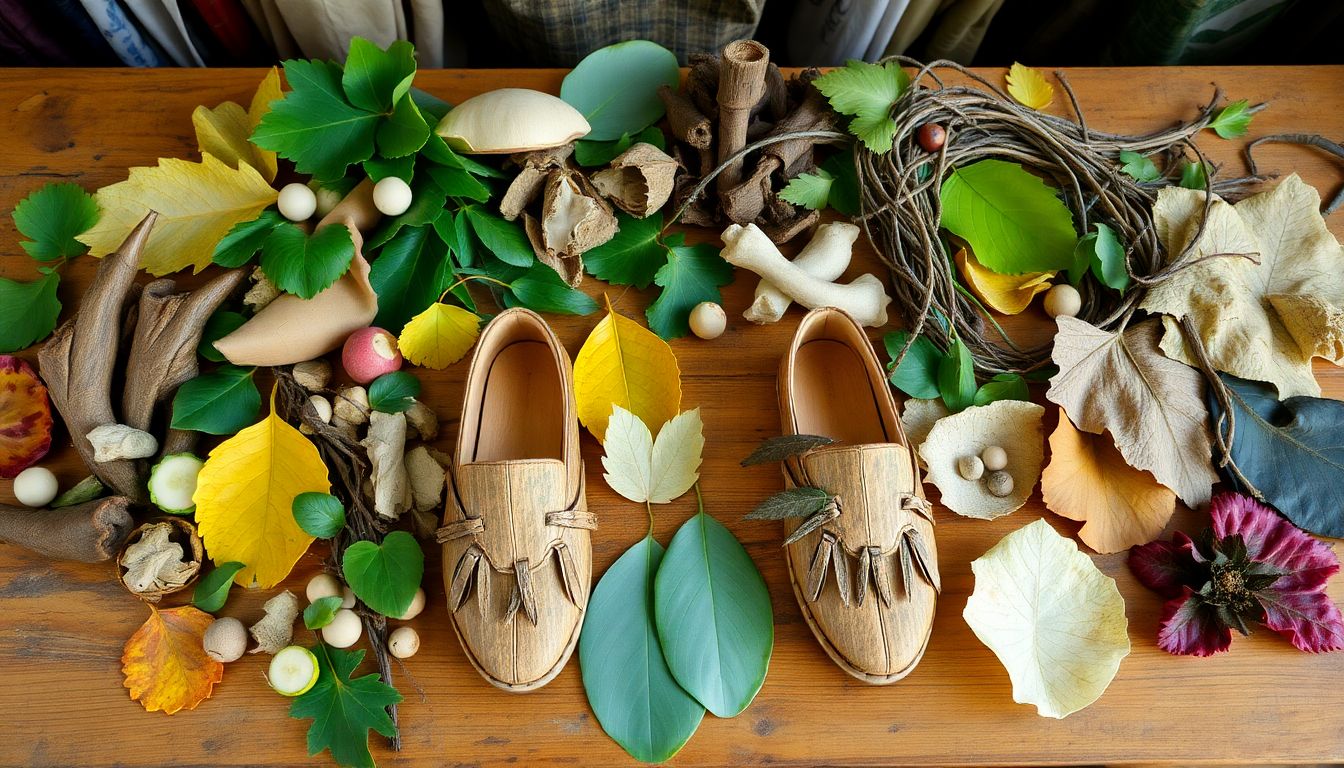
Gathering Materials: Nature’s Footwear Workshop
In the heart of the wilderness, where the modern world’s trappings fade, lies an opportunity to connect with nature in a profound way. One such connection can be found in the art of crafting primitive footwear, a skill that not only provides practical protection but also fosters a deep understanding and respect for the natural world. The journey begins with gathering the right materials, a task that requires keen observation, patience, and a sense of adventure.
The primary materials for primitive footwear are often found in the humble yet robust plants that dot the landscape.
- Bark: The inner bark of trees like birch, cedar, or willow is an excellent choice. It’s flexible, durable, and water-resistant. To harvest, carefully cut a strip from the tree, ensuring not to damage the tree’s ability to heal.
- Sedges and grasses are abundant and have strong, flexible fibers. Harvest them by cutting the stalks near the base and stripping the fibers away from the woody center.
- Nettle is another excellent source of fiber. Be sure to wear gloves when handling it, as it contains stinging hairs. Once dried, the sting is neutralized, and the fibers can be processed.
- gentle touches only!
To maintain the longevity of your bark shoes, it’s important to keep them from getting too wet. While they’re great for rainy day walks, prolonged exposure to water can cause the material to break down. So, if you find yourself in a downpour, don’t hesitate to give them a quick wipe down when you get home.
Lastly, let’s talk about breaking them in. Just like a fine pair of leather shoes, bark shoes need a little time to mold to your feet. If you find them a bit stiff at first, wear them for short periods and gradually increase the time. This will help prevent blisters and ensure a comfortable fit.
And there you have it! With a little bit of care and attention, your bark shoes will be by your side for many adventures to come. Happy walking!
- you might just find your next pair of shoes!
- Tracing the foot pattern onto the hide,
- Cutting out the pattern pieces,
- Stitching the upper together using a sinew or rawhide thread,
- Attaching the sole, which can be made from rawhide, wood, or other materials,
- Decorating the moccasin with beads, quills, or other embellishments (optional).
- Allow them to dry completely after getting wet,
- Avoid exposing them to direct sunlight for extended periods, as this can cause the bark to crack and dry out,
- Store them in a cool, dry place when not in use,
- Apply a natural oil or wax to the bark periodically to help maintain its flexibility and water resistance,
- If the bark becomes too dry or brittle, you can soak it in water and apply a natural oil or wax to rehydrate and revitalize it.
Next, we have the fibers that nature provides in abundance. These can be used to weave the soles and bindings of your footwear.
Lastly, rawhide can be used to create strong, flexible ties for securing your footwear. This can be obtained from the hides of animals that have died naturally. The process involves removing the hair, scraping off the flesh, and stretching the hide to dry.
Preparing these materials is a process that requires time and care. Bark needs to be soaked and scraped to remove the outer layer, fibers must be spun into thread, and rawhide needs to be softened and stretched. Each step is a chance to slow down, to connect with the natural world, and to appreciate the craftsmanship of our ancestors. Once prepared, these materials are ready to be transformed into a pair of footwear that is not just functional, but also a testament to your journey through nature’s workshop.
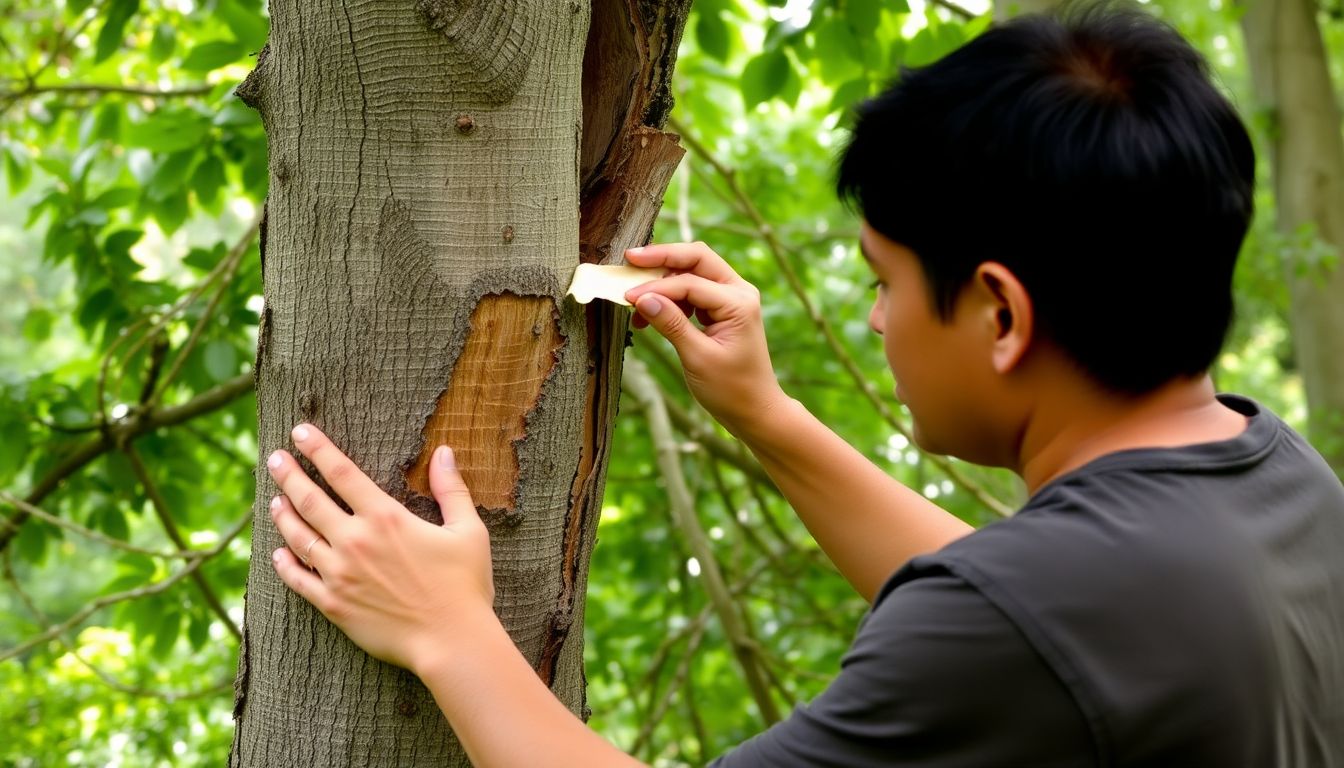
The Art of Bark Harvesting
The art of bark harvesting, an ancient practice with modern implications, is a delicate dance between human need and environmental sustainability. It’s a process that, when done responsibly, can provide valuable resources without causing irreparable harm to our forests. Let’s delve into this process, ensuring that every step taken is mindful of the tree’s health and the ecosystem’s balance.
The first step in this art is selection. Not all trees are suitable candidates for bark harvesting. The ideal tree is mature, healthy, and has a sufficient amount of bark that can be removed without compromising its structural integrity. The tree’s species also plays a crucial role. Some species, like the birch or the paperbark maple, are known for their bark’s unique properties and are often preferred.
Once the tree is selected, the next step is preparation. The area around the tree should be cleared to prevent damage to the bark during the harvesting process. The tools needed are also prepared at this stage. Traditionally, bark harvesting was done using axes and knives, but today, chainsaws and other power tools are often used to ensure clean cuts.
The actual harvesting process begins with a careful incision made around the base of the tree. This cut should be deep enough to separate the bark from the wood but not so deep that it damages the cambium layer, which is responsible for the tree’s growth. Once the initial cut is made, the bark can be peeled off in long strips. It’s important to work from the bottom up to avoid damaging the tree’s crown.
After the bark is harvested, the tree is left to heal. The exposed wood is treated with a sealant to prevent infection and the tree is monitored for signs of stress. If the tree shows signs of distress, it may need to be removed to prevent further damage.
The harvested bark is then processed. It can be dried and ground into a powder for use in various applications, such as medicine, dye, or paper production. Alternatively, it can be used fresh for certain crafts or as a natural insulator.
Sustainability is key in bark harvesting. It’s crucial to leave enough bark on the tree to ensure its survival and to allow for regrowth. It’s also important to harvest from a diverse range of species to prevent overharvesting from any one type of tree. By following these guidelines, we can continue to enjoy the benefits of bark harvesting without compromising the health of our forests.

Preparing the Bark: From Raw to Ready
Harvesting bark is just the first step in transforming it into a usable material for shoe making. The raw bark, often obtained from trees like birch or linden, is a far cry from the soft, malleable material we need for crafting shoes. The process of preparing the bark involves several stages, each crucial in making it suitable for its final purpose.
The journey begins with soaking. The harvested bark, still stiff and brittle from its time on the tree, is submerged in water. This step is not just about hydration; it’s also about patience. The bark needs time to absorb the water, a process that can take anywhere from a few hours to a couple of days, depending on the thickness and type of bark.
Once the bark has softened enough, the next step is scraping. This is where the bark begins to take on a more usable form. Using a sharp tool, the outer layer of the bark, which is often rough and uneven, is carefully scraped off. This step requires a steady hand and a keen eye, as the goal is to remove only the excess material without damaging the underlying layers.
After scraping, the bark may still be too stiff for immediate use. This is where the softening process comes into play. The bark is placed in a solution of water and a softening agent, often lye or potash. This mixture helps to break down the tough fibers in the bark, making it more pliable. The bark is left to soak in this solution for several days, with the water being changed periodically to ensure the process continues effectively.
Finally, the bark is ready for its transformation into shoes. It’s a process that requires time, skill, and patience, but the result is a unique, sustainable material that has been used for centuries to create footwear that is both durable and comfortable. Each step in this process is a testament to the art of shoe making, a craft that combines tradition with the natural world.

Moccasin Construction Basics
Moccasin construction, an art form dating back centuries, is a fascinating journey into the world of traditional footwear. At its core, a moccasin is a simple yet elegant design, consisting of three fundamental components: the vamp, the sole, and the stitching techniques that bind them together. Let’s delve into these basics, one step at a time.
The vamp, the upper part of the moccasin, is where the magic begins. It’s typically made from a single piece of leather, carefully cut and shaped to fit the foot. The pattern for the vamp is unique, often requiring the craftsman to trace the foot directly onto the leather. The vamp is not only the face of the moccasin but also the canvas for intricate beadwork and embroidery, a testament to the wearer’s tribe and heritage.
Next, we have the sole, the foundation of the moccasin. Traditionally, soles were made from thick, durable leather, often from the animal’s hindquarters. The sole is not only a protective layer but also a shock absorber, ensuring comfort during long walks. Some traditional soles are designed to be flexible, allowing the foot to move naturally, while others are stiffer, providing more support.
Finally, we come to the stitching techniques, the invisible thread that holds the moccasin together. The most common stitch used in moccasin construction is the ‘invisible’ or ‘bead’ stitch. This technique involves passing the needle through the leather from the inside out, creating a seamless, smooth exterior. The stitches are small and close together, ensuring the moccasin is secure and waterproof. Other techniques include the ‘chain’ stitch, used for decorative purposes, and the ‘whip’ stitch, used to attach the sole to the vamp.
Moccasin construction is a blend of art and craftsmanship, a testament to the ingenuity of our ancestors. Each step, from tracing the vamp pattern to the final stitch, is a story in itself, a story of tradition, culture, and the human spirit’s ability to create beauty from the simplest of materials.
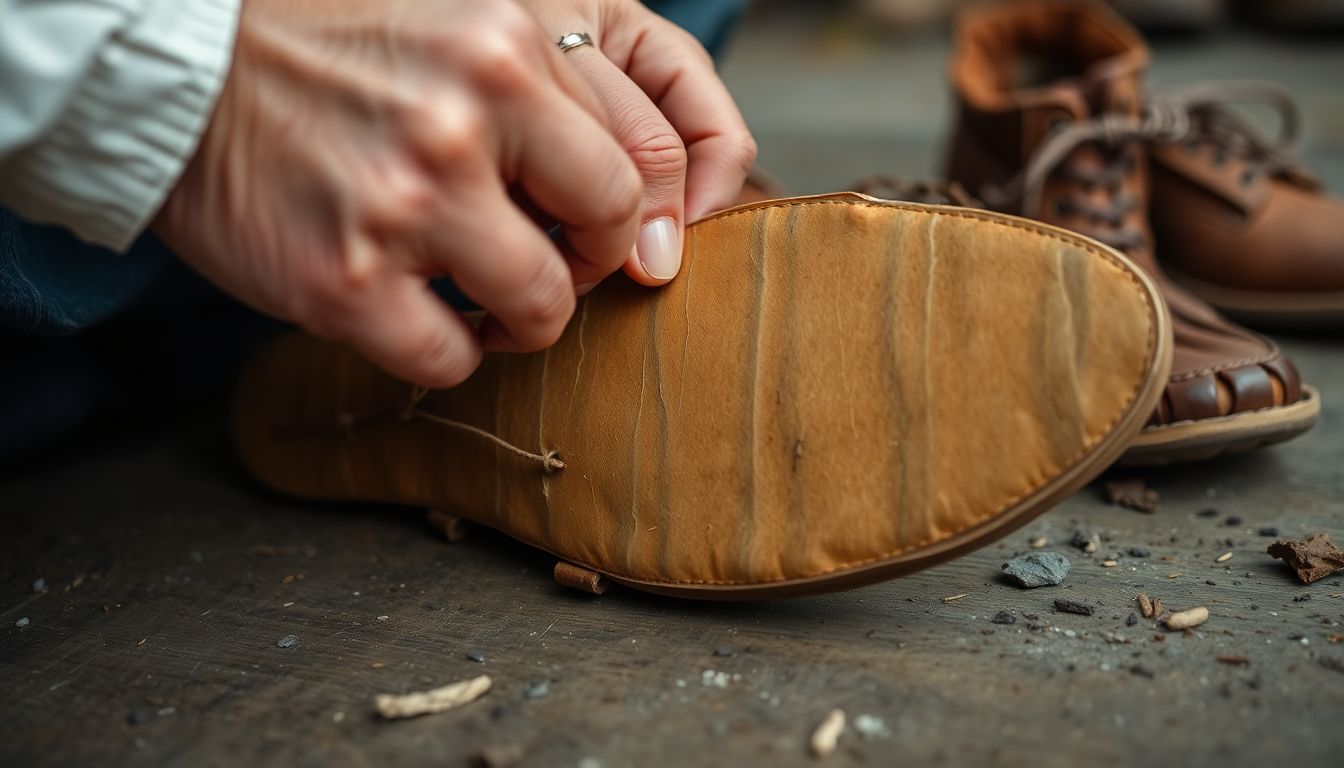
Crafting the Sole: Bark Meets Comfort
In the heart of the forest, where nature’s craftsmanship is unparalleled, lies an unusual yet ingenious material for footwear soles: bark. This guide will walk you through the process of transforming this humble tree covering into a comfortable and durable sole, a testament to the harmony between nature and innovation.
The journey begins with the selection of the bark. Opt for species with strong, flexible bark like birch or cherry. Once harvested, the bark needs to be cleaned and dried thoroughly to prevent any mold or rot. This process can take several weeks, but it’s crucial for the longevity of your sole.
Now, let’s shape the bark into a sole. This is where the artistry comes in. You’ll need a sharp knife and a steady hand. Start by drawing the outline of your foot on the bark, adding a few millimeters for thickness. Carefully cut along the line, ensuring the sole is even and smooth. Remember, the sole should be slightly larger than your foot to provide adequate support and protection.
Next, it’s time to layer. To enhance the sole’s durability and comfort, we’ll create a sandwich of sorts. Start with a layer of bark, then add a layer of cork or felt for cushioning. The cork or felt should be cut to fit the sole precisely. On top of this, add another layer of bark. This layered approach provides both support and cushioning, making your sole comfortable for long walks in the woods.
Now, we stitch. Using a strong, flexible thread like sinew or waxed linen, stitch around the perimeter of the sole. This will hold the layers together and prevent them from separating. Make sure your stitches are even and tight. You can also add decorative stitching patterns if you’re feeling creative.
Finally, attach the sole to your shoe or boot. This can be done using more stitching, or by gluing the sole to the shoe with a strong, flexible adhesive. Once attached, allow the sole to dry completely before wearing.
And there you have it! A comfortable, durable sole crafted from bark. This process not only creates a unique pair of footwear but also connects you to the natural world in a tangible way. So, go ahead, give it a try. After all, there’s no better way to walk in nature than on nature itself.
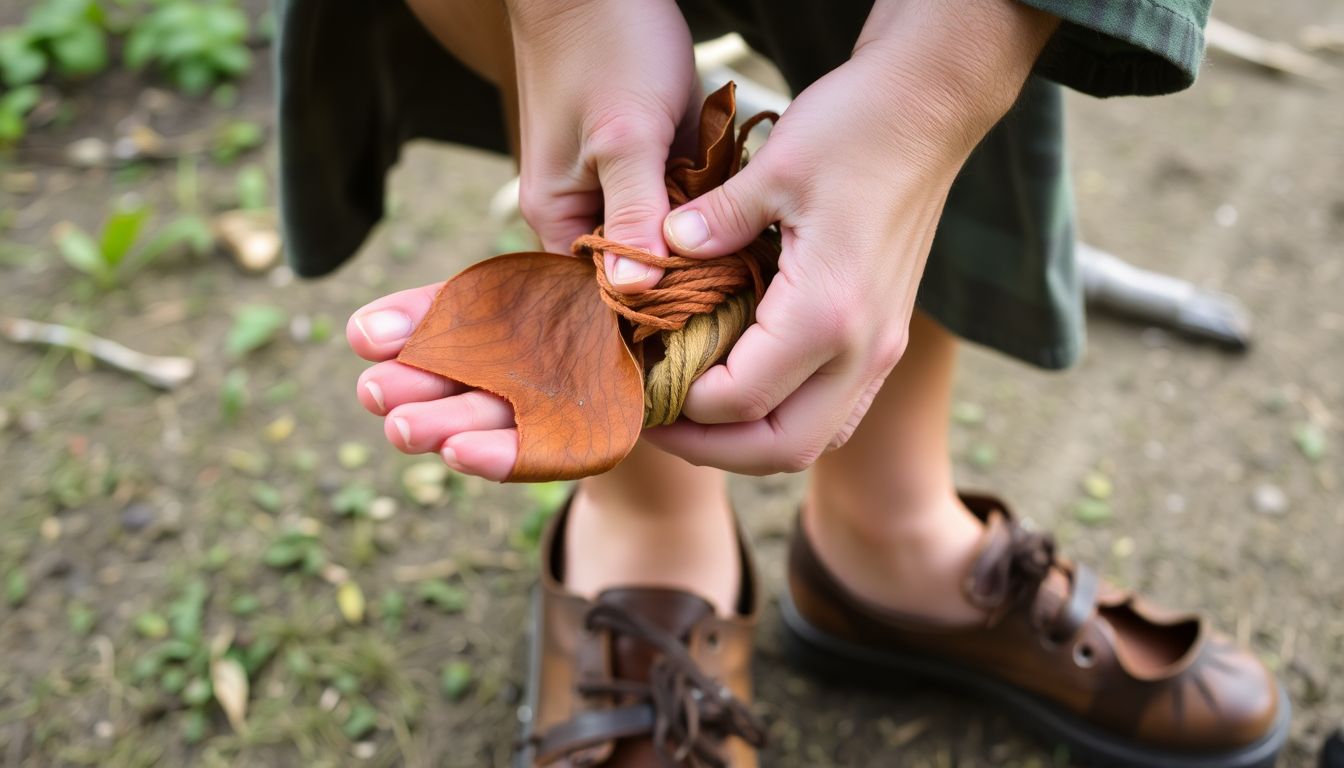
The Vamp: Wrapping Your Feet in Comfort
In the heart of the forest, where nature’s bounty abounds, lies the secret to crafting a unique, eco-friendly footwear accessory: the vamp. This is the upper part of the shoe that wraps around the foot, providing comfort and a touch of rustic elegance. Let’s embark on this natural crafting journey together.
The first step in creating your bark vamp is to gather your materials. You’ll need a sturdy piece of bark, preferably from a tree like birch or cherry, which peels off in large, flat sheets. You’ll also need some strong, flexible plant fibers, such as those found in nettle or willow, for lashing. Additionally, prepare some natural dyes, like berries or tree bark, to add color if desired.
Once you’ve gathered your materials, it’s time to prepare the bark. Carefully peel the bark from the tree, ensuring it’s flat and free of any imperfections. Measure your foot and cut the bark into a pattern that will wrap around your foot, leaving room for your toes and heel. You can use a simple rectangle for a basic vamp, or get creative with curves and angles for a more intricate design.
Now, it’s time to lash the vamp together. Using your plant fibers, start at the bottom of the vamp, where your toes will be. Wrap the fiber around the vamp, pulling it tight and securing it with a knot. Continue wrapping and knotting up the vamp, ensuring it’s snug and secure. Leave the top of the vamp open for now, as you’ll need to adjust the fit once it’s on your foot.
Once the vamp is lashed together, it’s time to add the lashing that will wrap around your foot. Cut a long piece of fiber and start at the bottom of the vamp. Wrap the fiber around your foot, pulling the vamp with it. Wrap the fiber up and over the vamp, securing it with a knot. Continue wrapping and knotting until you reach the top of the vamp. Make sure the vamp is snug but not too tight, allowing for comfortable movement.
Finally, if you’d like to add a pop of color, now is the time to use your natural dyes. Dip the vamp into your dye, ensuring it’s fully submerged. Leave it to soak for a few hours, or even overnight for a deeper color. Once you’re satisfied with the color, rinse the vamp and allow it to dry completely.
And there you have it! Your very own bark vamp, crafted from nature’s own materials. This unique footwear accessory not only provides comfort but also tells a story of your connection to the natural world. So go ahead, wrap your feet in comfort and let your feet breathe in nature’s embrace.
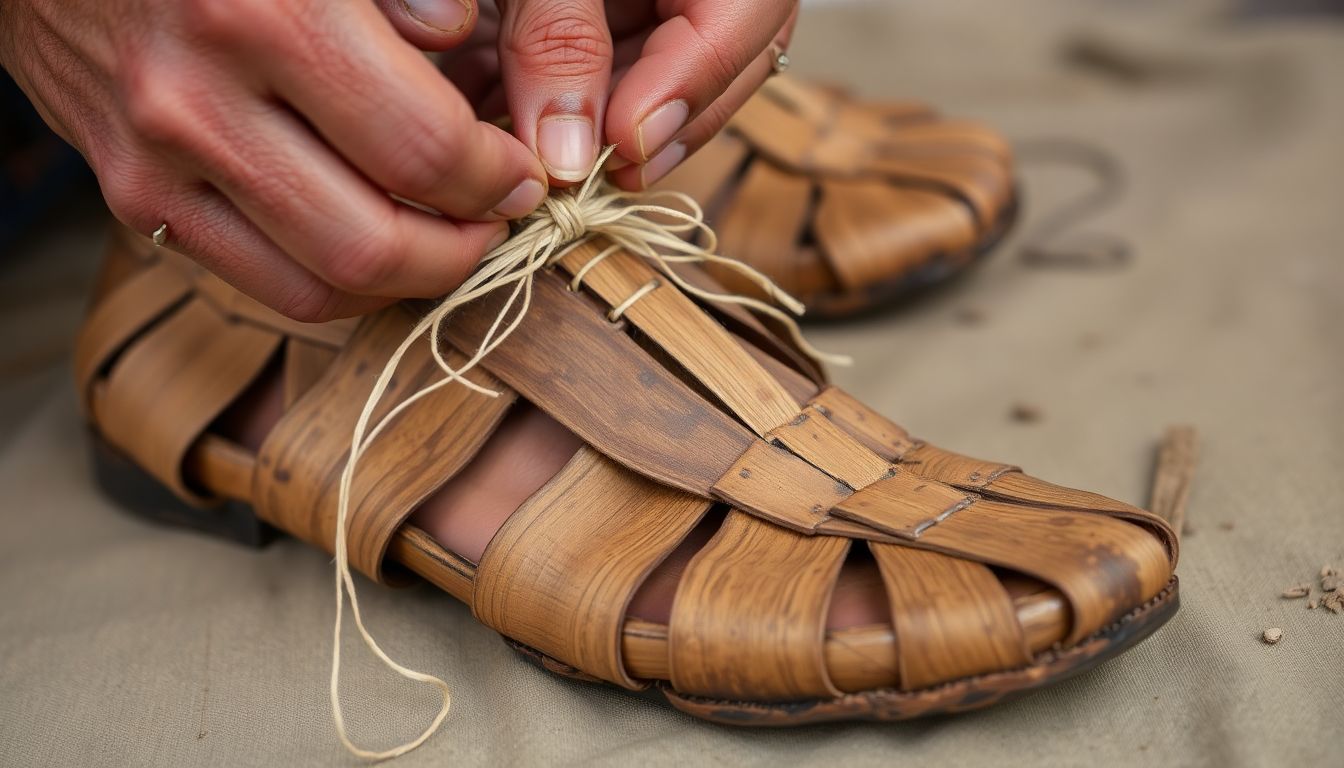
Stitching Techniques: Sewing with Natural Fibers
In the realm of primitive footwear, crafting durable and comfortable footwear from natural materials has been an essential skill for centuries. Two prominent stitching techniques that have stood the test of time are sinew stitching and plant fiber sewing. Let’s delve into these techniques, each offering a unique blend of strength and connection to the natural world.
Sinew stitching, an ancient technique, utilizes the tendons of animals as the primary sewing material. These tendons, once cleaned and dried, become strong, flexible threads that can withstand considerable wear and tear. The process begins with preparing the sinew by scraping it with a sharp tool to remove any remaining flesh and then soaking it in water to soften it. Once softened, the sinew is stretched and twisted into a thin, uniform thread. The stitching itself is typically done using a simple overcast stitch, where the needle pierces the material from the underside, creating a secure, overlapping seam. This technique is particularly useful for sewing leather and other thick, durable materials, making it ideal for the soles and uppers of primitive footwear.
Plant fiber sewing, on the other hand, is a technique that harnesses the strength and flexibility of plant fibers. Fibers from plants like nettle, flax, and hemp are commonly used for this purpose. The process begins with harvesting the plant, often in the spring or fall when the fibers are at their strongest. The fibers are then separated from the stalk, a process known as ‘retting,’ which can be done through natural processes like dew-retting or more intensive methods like water-retting. Once the fibers are separated, they are spun into thread using a drop spindle or a spinning wheel. The resulting thread is strong and flexible, perfect for sewing together plant-based materials like bark, cloth, or even other fibers.
In plant fiber sewing, several stitches can be employed depending on the material and the desired outcome. For instance, the whip stitch is often used for sewing together edges, while the running stitch is useful for gathering or pleating material. The blanket stitch, a decorative and sturdy stitch, is often used to finish edges or create patterns. Regardless of the stitch used, plant fiber sewing allows for the creation of footwear that is not only functional but also beautifully integrated with the natural world.
Both sinew stitching and plant fiber sewing require patience, skill, and a deep understanding of the materials at hand. However, the rewards are immense. These techniques allow us to create footwear that is not only durable and comfortable but also deeply connected to the natural world. They are a testament to the ingenuity and resourcefulness of our ancestors and a reminder that with the right tools and knowledge, we can create functional, beautiful items from the materials that surround us.
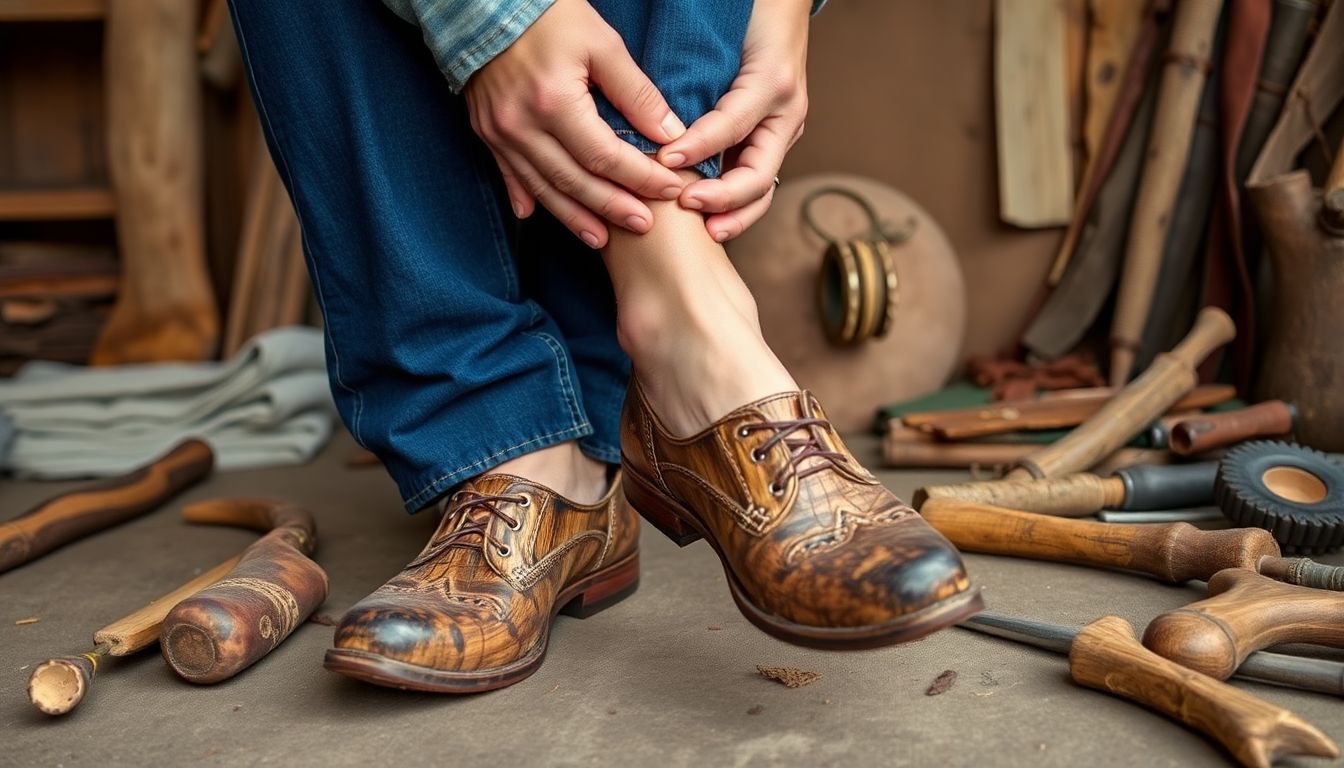
Customizing Fit: Ensuring a Perfect Fit
Achieving a perfect fit for your bark shoes is an art that combines precision and personal touch. Let’s embark on this journey to ensure your shoes are not just stylish, but also comfortable and tailored to your unique feet.
First, let’s talk about measurement. The key here is to measure your feet accurately. Stand on a piece of paper, trace the outline of your foot, and then measure the length from the tip of your longest toe to the back of your heel. This is your foot length. Also, measure the width of your foot at its widest point. These measurements will serve as your blueprint for a perfect fit.
Once you have your measurements, it’s time to consider the design of your bark shoes. Bark shoes are known for their customizability. You can adjust the width, the height of the heel, and even the shape of the toe box. If you have a high instep, consider a shoe with a deeper heel cup. If you have wide feet, opt for a shoe with a wider toe box.
Now, let’s talk about adjustments. If your bark shoes are a bit too tight, you can stretch them out. Soak the shoes in warm water for about 10 minutes, then wear them with thick socks to stretch them out. If they’re too loose, you can add insoles or use shoe stretchers to tighten them up.
Lastly, don’t forget about the laces. The way you tie your laces can also affect the fit. For example, if you have a high arch, try tying your laces in a criss-cross pattern to provide extra support.
In conclusion, ensuring a perfect fit for your bark shoes is a process that involves careful measurement, thoughtful design choices, and a bit of trial and error. But with a little patience and attention to detail, you’ll be rewarded with a pair of shoes that are as comfortable as they are stylish.
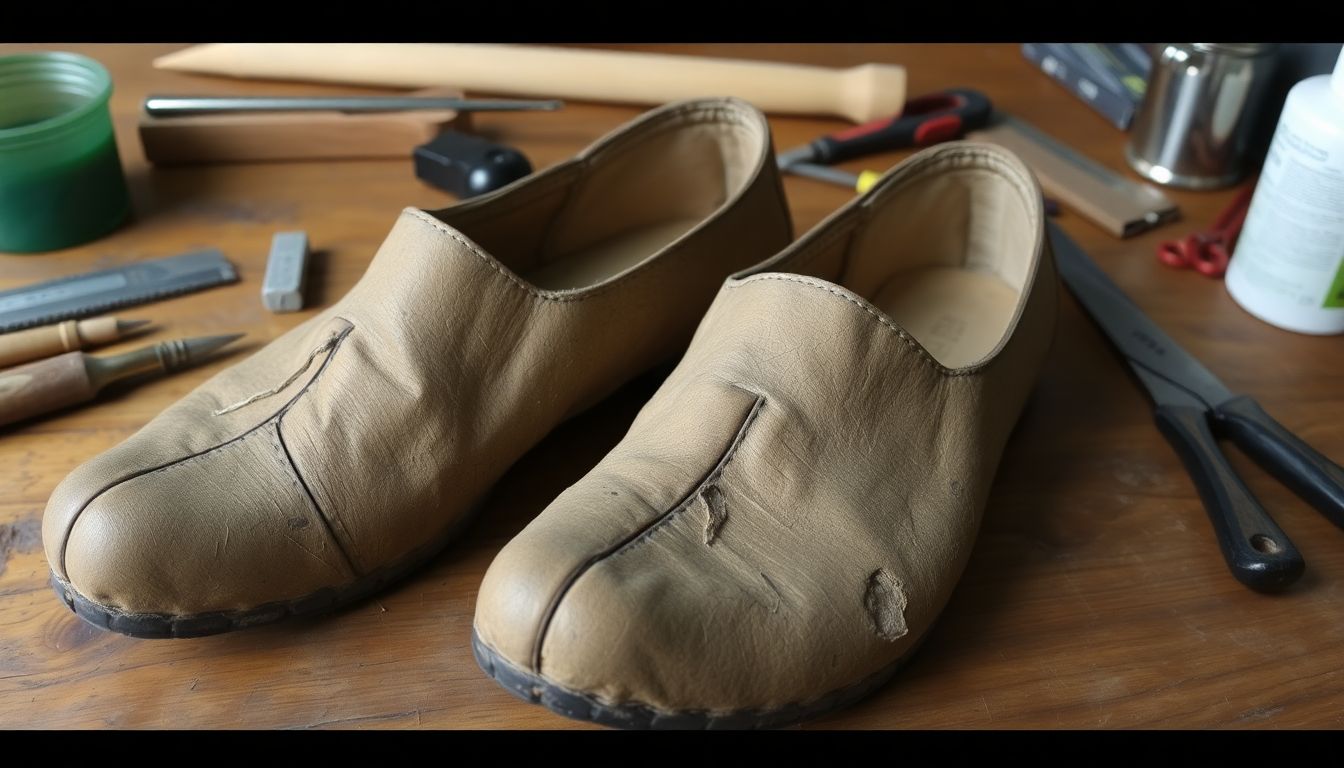
Caring for Your Bark Shoes: Longevity and Maintenance
Ah, bark shoes! Those delightful, eco-friendly footwear that not only keep your feet happy but also make you feel like you’re walking on a forest floor. To ensure your bark shoes remain your faithful companions for a long time, let’s dive into some care tips that will keep them looking and feeling as good as new.
First things first, let’s talk about the material. Bark shoes are typically made from natural latex, which is derived from the sap of rubber trees. This means they’re not only sustainable but also breathable and comfortable. However, they’re not fans of excessive heat or direct sunlight. So, after a long day of wearing them, don’t leave them baking in the sun. Instead, store them in a cool, dry place. Think of it as giving them a cozy little cave to retreat to.
Now, let’s talk about cleaning. Bark shoes are designed to look like they’ve been worn through a forest, so a little dirt here and there is part of their charm. But if you want to give them a spruce up, a simple wipe down with a damp cloth should do the trick. Avoid using harsh chemicals or soaps, as they can damage the natural latex. Think of it like caring for a delicate plant

Beyond Bark: Exploring Other Natural Materials
Beyond the familiar bark, a world of natural materials awaits, offering unique opportunities to craft primitive footwear. Let’s delve into some of these earthy treasures.
Leaves, nature’s own footwear, are an excellent starting point. Large, sturdy leaves like those of the banana or fig tree can be folded and tied around the foot, providing a flexible, lightweight sole. The veins on the leaf surface offer additional support, much like the tread on modern shoes. To create these leaf sandals, simply fold the leaf in half lengthwise, place your foot on it, and tie it around your ankle with a vine or strip of bark.
Animal hides, a traditional material for footwear, offer durability and protection. To create hide shoes, start by soaking the hide in water to soften it. Then, trace your foot on the hide, adding about an inch around the edges for overlap. Cut out the pattern, and use a sharp tool to poke holes around the edge. Lace the hide around your foot using a plant fiber or sinew, ensuring a snug fit. For added comfort, you can stuff the shoe with soft materials like moss or grass.
Woven plant fibers, another versatile material, can be used to create sandals or even shoes with a more structured sole. To weave plant fibers, start by soaking them in water to make them pliable. Then, create a loom using two sturdy sticks and some vine or cord. Weave the fibers back and forth, creating a flat, sturdy sole. Once you’ve reached the desired size, trim the edges and use a plant fiber or sinew to lace the shoe to your foot.
These natural materials, when used creatively, can provide comfortable, sustainable footwear. So, the next time you’re in nature, don’t forget to look down
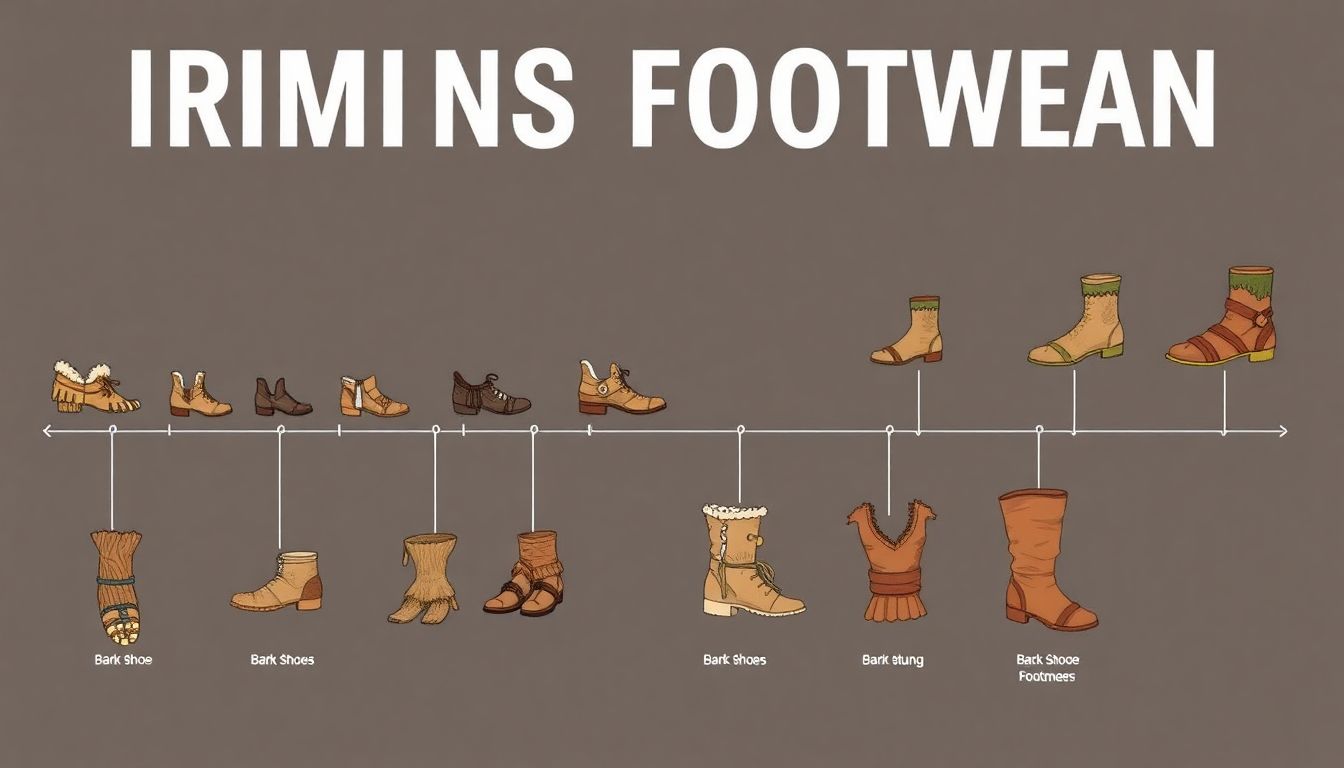
The Evolution of Primitive Footwear: From Bark to Boots
The journey of primitive footwear is a fascinating tale of human ingenuity and adaptation, tracing back to the dawn of our species. The earliest forms of footwear were as simple as they were ingenious, crafted from the natural world around our ancestors. Bark shoes, made from the soft inner bark of trees, were one of the first examples of human footwear. These rudimentary shoes provided a basic level of protection against sharp rocks and rough terrain, a significant advancement from walking barefoot. The use of bark shoes can be traced back to around 40,000 years ago, with evidence found in caves in the Pacific Northwest of the United States.
The evolution of footwear was not a linear process, but rather a series of innovations driven by various factors. Climate played a significant role, with people in colder regions developing footwear that provided insulation and protection from the elements. In arctic regions, the Inuit created boots from sealskin and caribou hide, which not only protected their feet but also helped to retain heat. Similarly, in hotter climates, footwear was designed to provide protection from the sun and rough surfaces, with some cultures using woven plant fibers or animal hides.
As human societies became more complex, so did their footwear. The invention of leatherworking around 2200 BCE in Egypt allowed for the creation of more durable and structured shoes. Leather could be shaped, stitched, and even decorated, reflecting the cultural and social status of the wearer. This period also saw the introduction of sandals, which were lighter and more comfortable than their bark and hide predecessors.
The development of boots was a significant milestone in the evolution of footwear. Boots provided greater protection and support, extending up the leg to protect the ankle and sometimes even the knee. The use of boots can be traced back to ancient Greece and Rome, where they were worn by soldiers and laborers. The design of boots evolved over time, with the introduction of heels, buckles, and laces, each innovation serving a specific purpose.
Today, footwear has evolved into a vast and diverse industry, with a wide range of styles and materials. However, the principles of protection, support, and adaptation to the environment remain the same. From bark shoes to boots, the evolution of primitive footwear is a testament to human creativity and our ongoing relationship with the natural world.









